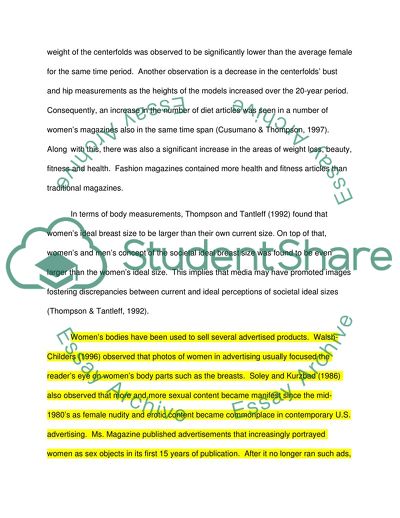Cite this document
(How Women are Portrayed by Media Coursework Example | Topics and Well Written Essays - 1500 words, n.d.)
How Women are Portrayed by Media Coursework Example | Topics and Well Written Essays - 1500 words. https://studentshare.org/sociology/1812356-position-paper-for-feminist-perspective-course
How Women are Portrayed by Media Coursework Example | Topics and Well Written Essays - 1500 words. https://studentshare.org/sociology/1812356-position-paper-for-feminist-perspective-course
(How Women Are Portrayed by Media Coursework Example | Topics and Well Written Essays - 1500 Words)
How Women Are Portrayed by Media Coursework Example | Topics and Well Written Essays - 1500 Words. https://studentshare.org/sociology/1812356-position-paper-for-feminist-perspective-course.
How Women Are Portrayed by Media Coursework Example | Topics and Well Written Essays - 1500 Words. https://studentshare.org/sociology/1812356-position-paper-for-feminist-perspective-course.
“How Women Are Portrayed by Media Coursework Example | Topics and Well Written Essays - 1500 Words”. https://studentshare.org/sociology/1812356-position-paper-for-feminist-perspective-course.


